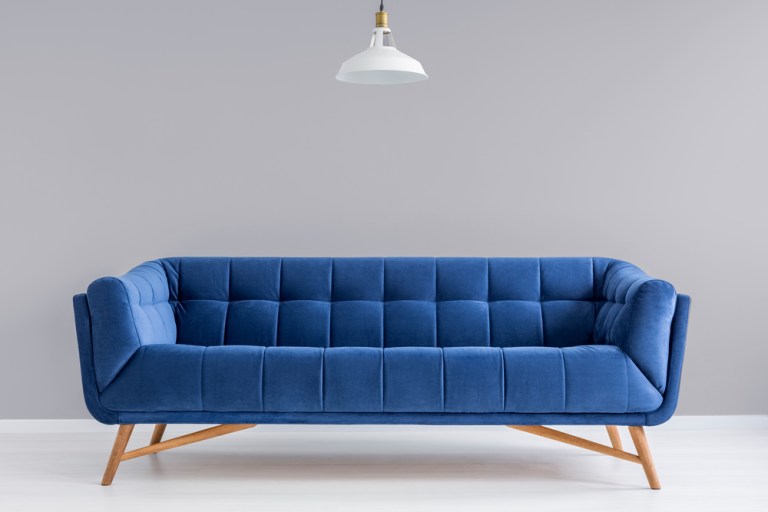Millennials “Feather” Their Nest With Furniture Subscriptions

Millennials move often, between jobs, locales and apartments. They’re used to flexibility when it comes to all manner of goods and services – from renting textbooks to a ride in someone else’s car. So, why should quality furniture should be any different? That’s what Feather’s CEO Jay Reno tells us is the latest trend as Millennials feather their transient nests in this week’s Topic TBD.
Used to be that when you bought furniture – the “serious” furniture of wood and steel, sturdy and long-lived, beyond the college days of futons and air mattresses – it went where you went.
Fresh from college, into the first apartment, then the second apartment … and eventually, then to the first house, and maybe beyond. Along the way, you kept buying and upgrading, as salary permitted and adulthood took hold.
Might those days, akin to a furniture “rite of passage,” be in the rearview mirror?
Consider the fact that ours is a society ever-evolving toward transience, especially for millennials. And in that sense, the subscription and on-demand model works on many levels, covering everything from books and other media to meals to ride-hailing … so why not furniture?
In an interview with Karen Webster for the latest Topic TBD installment, Jay Reno, founder and CEO of startup Feather, said that the younger generation’s view of furniture – namely, the bigger-ticket items that can cost thousands of dollars – is evolving.
The startup launched earlier this year, renting out furniture spanning bedroom sets to dining room sets (by the piece or as a fully outfitted room or apartment package deal) to customers in New York and San Francisco. As Reno told Webster, for millennials “the American dream has changed. People no longer want to own their own house” with the proverbial white picket fence or several cars in the driveway. “Ownership of things ties you to a specific place … and removes the ability to have flexibility” in daily life.
Reno said that the younger generation is moving more frequently than its predecessors, with the 18- to 35-year-old cohort moving an average of 12 times during the period that stretches from the time they leave college to the time they buy their first home or apartment.
That’s a lot of schlepping.
With so many changes of address, it may make sense that hunting down the perfect sofa and the perfect complementary end table, and other items, takes a backseat when considering the myriad ways in which the surrounding four walls can shift – along with the floor plan. Who knows, after all, if everything that is stuffed into a U-Haul is going to fit within the confines of the new digs?
Along with the desire for flexibility that comes with the subscription model, Reno said that millennials are showing a savvy approach to furniture ownership, often opting for Ikea and other similar classes of furniture even if they can afford more upscale items. Conscious of the fact that the money could be put to work elsewhere (such as saving up for a new home), they’re hesitant to sink capital into large, heavy, immobile purchases that may eventually be destined for the scrapheap or for sale for pennies on the dollar via sites like Craigslist.
Queried by Webster about the profile of a typical Feather customer, the CEO stated that the firm’s customers often include college students who are moving away from the dorm environment, or younger professionals who are transitioning to new places of employment or between apartments located within the same city, or who are relocating to the States from abroad.
“That’s really what we wanted to see,” said Reno of Feather’s customer base. “These are regular folks who are living a normal life within an urban area and want to move away from owning” items – building on an experience base where users have rented everything from cars to apartments, while Uber and other services lend credence to the idea of paying for something only as you are using it.
The Feather rental periods span three months and beyond, with a typical rental period of 12 months, which tends to coincide with the average lease term of an apartment, said Reno. The company’s furniture offerings fall into three classes/price ranges: Standard, Hip and Premium. Reno said that 50 percent of renters choose package deals, while the remainder opts for picking and choosing on a piece-by-piece basis. The individuality comes out not through the sofa or the dining room set, but from sheets, artwork and other accessories – which become the focal point, while furniture becomes a backdrop.
As for the merchandise itself? Prodded by Webster as to whether renting engenders a relative lack of care when it comes to big-ticket items – witness the way some people treat rental cars, for example – Reno said that the firm has not seen much in the way of damage to Feather’s offerings upon returns. This speaks both to the durability of the furniture (chosen by the company so that they can be wiped down or re-stained or put back in the field, so to speak) and to the mindfulness of renters.
Webster noted that some services – such as Rent the Runway – offer tiers of subscription as gateways to experiences with an option to buy. Reno said that customers often ask to buy the furniture they’ve rented, a request Feather is happy to honor. Though Feather does not have an official “rent to own” option in place, that is something the company is pursuing, said Reno.